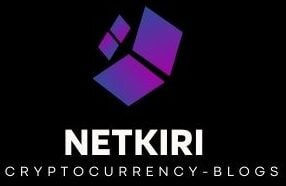In the fast-paced world of cryptocurrency trading, investors are often faced with a plethora of options, each promising unique advantages and opportunities for profit. Among the most popular trading methods are spot trading and futures trading, both of which play crucial roles in the crypto market. For beginners, understanding the differences between these two approaches is essential for making informed investment decisions. In this comprehensive guide, we delve into the intricacies of spot trading and futures trading on crypto exchanges, exploring their distinct characteristics, benefits, and risks.
Table of Contents
Spot Trading: A Foundation for Beginners
Spot trading is perhaps the most straightforward method of buying and selling cryptocurrencies. In spot trading, investors purchase digital assets outright, with transactions settled immediately at the current market price. This direct exchange of assets is executed on spot markets, where buyers and sellers interact directly to facilitate trades.
How Spot Trading Works
To engage in spot trading, beginners need to create an account on a cryptocurrency exchange platform. These platforms act as intermediaries, connecting buyers and sellers and providing a user-friendly interface for trading. Once an account is set up, investors can deposit funds into their account and begin buying and selling cryptocurrencies.
Spot trading offers several advantages for beginners
- Simplicity: Spot trading is straightforward, making it accessible to beginners with minimal trading experience.
- Immediate Settlement: Transactions in spot trading are settled instantly, allowing investors to access their assets immediately.
- Lower Risk: Since spot trades involve buying and selling actual cryptocurrencies, investors are not exposed to the risks associated with derivatives trading.
However, spot trading also comes with its own set of challenges. Market volatility can lead to rapid price fluctuations, impacting the profitability of trades. Additionally, beginners must familiarize themselves with basic trading concepts such as order types, market depth, and liquidity to navigate spot markets effectively.
Futures Trading: Leveraging Market Dynamics
Futures trading introduces a new dimension to cryptocurrency trading by allowing investors to speculate on the future price movements of digital assets. Unlike spot trading, futures contracts represent agreements to buy or sell assets at a predetermined price on a specified future date. This derivative-based approach enables investors to leverage their positions, potentially amplifying both profits and losses.
How Futures Trading Works
In futures trading, investors enter into contracts to buy or sell a specific quantity of cryptocurrency at a predetermined price and date. These contracts are traded on futures exchanges, where participants can take long (buy) or short (sell) positions based on their market expectations.
Futures trading offers several advantages for investors
- Leverage: Futures contracts allow investors to control larger positions with a relatively small amount of capital, amplifying potential profits.
- Hedging: Futures contracts can be used to hedge against price fluctuations, providing a way to mitigate risk in volatile markets.
- Diverse Strategies: Futures trading opens up a wide range of trading strategies, including scalping, swing trading, and arbitrage, catering to different risk appetites and investment goals.
However, futures trading also introduces significant risks, including
- Leverage Risk: While leverage can amplify profits, it also magnifies losses, leading to potentially significant financial exposure.
- Price Volatility: Futures markets are highly volatile, with prices subject to rapid fluctuations influenced by various factors such as market sentiment, regulatory developments, and macroeconomic trends.
- Margin Calls: Trading on margin requires maintaining a minimum account balance to cover potential losses. Failure to meet margin requirements can result in forced liquidation of positions.
Key Differences Between Spot and Futures Trading
While both spot and futures trading offer opportunities for profit in the cryptocurrency market, they differ in several key aspects:
- Settlement: Spot trades are settled immediately at the current market price, while futures contracts have a predetermined settlement date in the future.
- Leverage: Futures trading allows investors to leverage their positions, amplifying both potential profits and losses, whereas spot trading does not involve leverage.
- Risk Exposure: Spot trading exposes investors to the risk of price fluctuations in the underlying asset, while futures trading introduces additional risks such as leverage and margin calls.
- Trading Strategies: Spot trading is often favored by long-term investors seeking to buy and hold cryptocurrencies, while futures trading caters to traders looking to capitalize on short-term price movements through speculative trading strategies.
Conclusion
Spot trading and futures trading are two distinct approaches to cryptocurrency trading, each offering unique advantages and risks for investors. While spot trading provides simplicity and immediate settlement, futures trading introduces leverage and diverse trading strategies. For beginners, understanding the differences between these two methods is crucial for making informed investment decisions and navigating the dynamic landscape of the cryptocurrency market. By weighing the pros and cons of spot and futures trading and developing a sound trading strategy, investors can position themselves for success in the exciting world of crypto trading.

